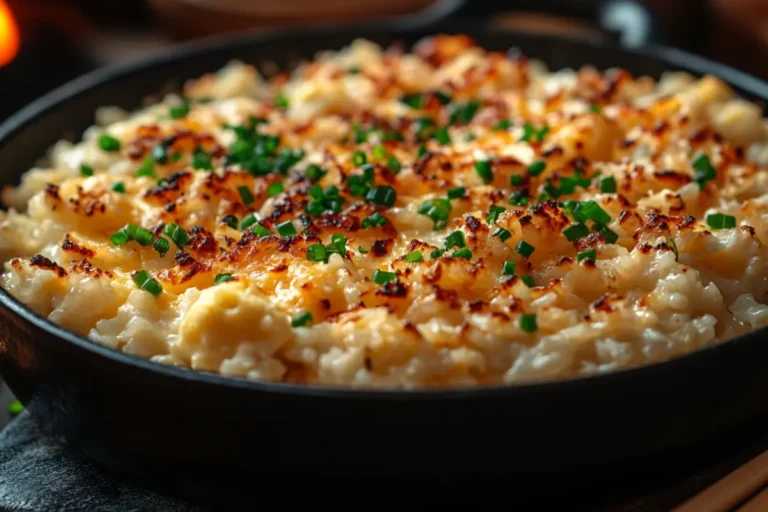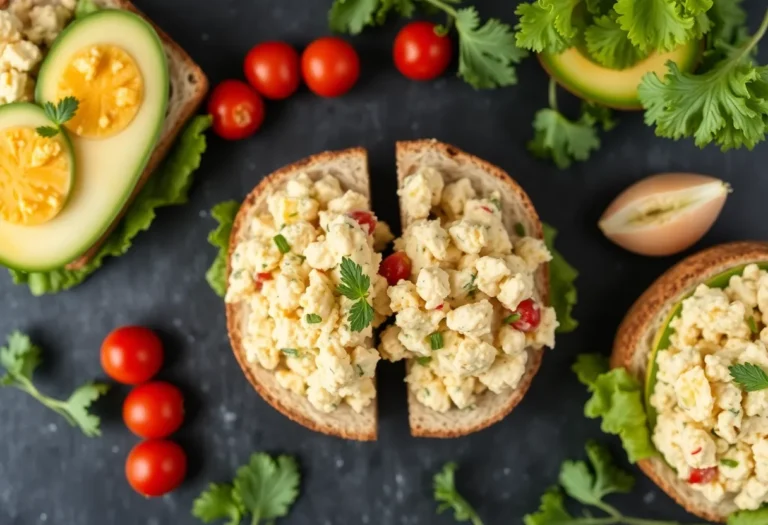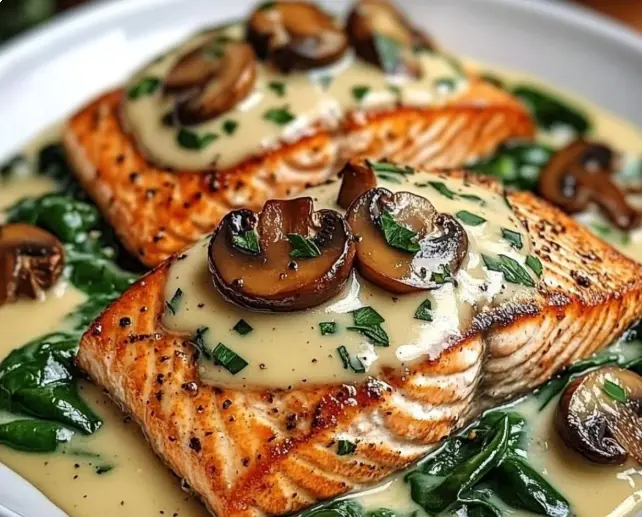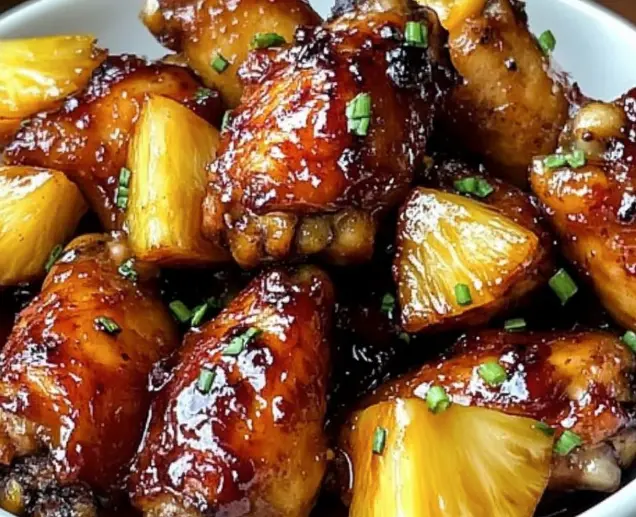Why Authentic Egg Fried Rice Stands Out
There’s something magical about a plate of authentic egg fried rice. It’s simple yet bursting with flavor, quick to make but deeply satisfying. Unlike takeout versions drowning in oil or overly salty soy sauce, a true, authentic egg fried rice recipe balances fluffy rice, umami-rich seasonings, and that perfect wok hei—the elusive “breath of the wok” that makes each bite irresistible.
This dish is a staple in Chinese cuisine, served everywhere from home kitchens to high-end restaurants. But what really makes it stand out? It’s the perfect combination of texture, aroma, and seasoning, crafted with minimal ingredients yet packed with complexity. Plus, it’s a great way to transform leftover rice into something extraordinary.
Egg fried rice pairs wonderfully with classic Chinese soups like egg drop soup. Not only is it delicious, but it also offers surprising health benefits—check out our guide on egg drop soup health benefits.
Whether you’re a fried rice newbie or looking to elevate your skills, learning how to make authentic egg fried rice will change your home-cooking game forever.
The History and Cultural Significance of Fried Rice
Fried rice isn’t just a dish—it’s a story on a plate. Originating in China’s Sui Dynasty (589–618 AD), fried rice was a clever way to repurpose leftover rice, ensuring no grain went to waste. Since then, it has evolved into countless variations across China, Thailand, Indonesia, and beyond.
In Chinese culture, fried rice symbolizes prosperity and resourcefulness. Families often cook it to make the most of ingredients on hand, and it’s commonly served during celebrations and gatherings.
Each region in China has its own spin. Yangzhou fried rice, for example, features shrimp and BBQ pork, while Cantonese-style fried rice leans on lighter seasoning for a cleaner taste. However, authentic egg fried rice keeps things simple and traditional—focusing on the harmony between eggs, rice, and soy sauce.
Today, fried rice is a global comfort food, loved from Beijing to New York. But to truly appreciate it, you need to understand what makes it authentic—and how to avoid turning it into a mushy, over-seasoned mess.
What Makes This Recipe Truly Authentic?
So, what separates a restaurant-quality egg fried rice from the stuff you might have made by accident (we’ve all been there)? Authenticity boils down to three things:
- Properly Cooked Rice: Authentic fried rice isn’t made with fresh rice straight from the pot—it relies on day-old, slightly dry rice for that signature light and fluffy texture.
- Minimal, Quality Ingredients: No ketchup, no peas-and-carrots medley—just rice, eggs, soy sauce, and aromatics like green onions and garlic. Simple, yet deeply flavorful.
- High Heat & Wok Cooking: True egg fried rice is cooked over high heat in a wok to develop wok hei, a smoky essence that brings out the best in the dish.
Key Differences Between Authentic & Western Fried Rice
Let’s set the record straight—Western-style fried rice is not the same as authentic Chinese egg fried rice. Here’s how they differ:
| Feature | Authentic Egg Fried Rice | Western Fried Rice |
|---|---|---|
| Rice Texture | Dry, separate grains | Often mushy or sticky |
| Seasoning | Light soy sauce, minimal salt | Heavy soy sauce, extra salt |
| Cooking Method | High heat, quick toss in a wok | Slow-cooked, often in a pan |
| Ingredients | Simple: eggs, rice, green onions | Peas, carrots, extra veggies |
Why Day-Old Rice is Essential for the Perfect Texture
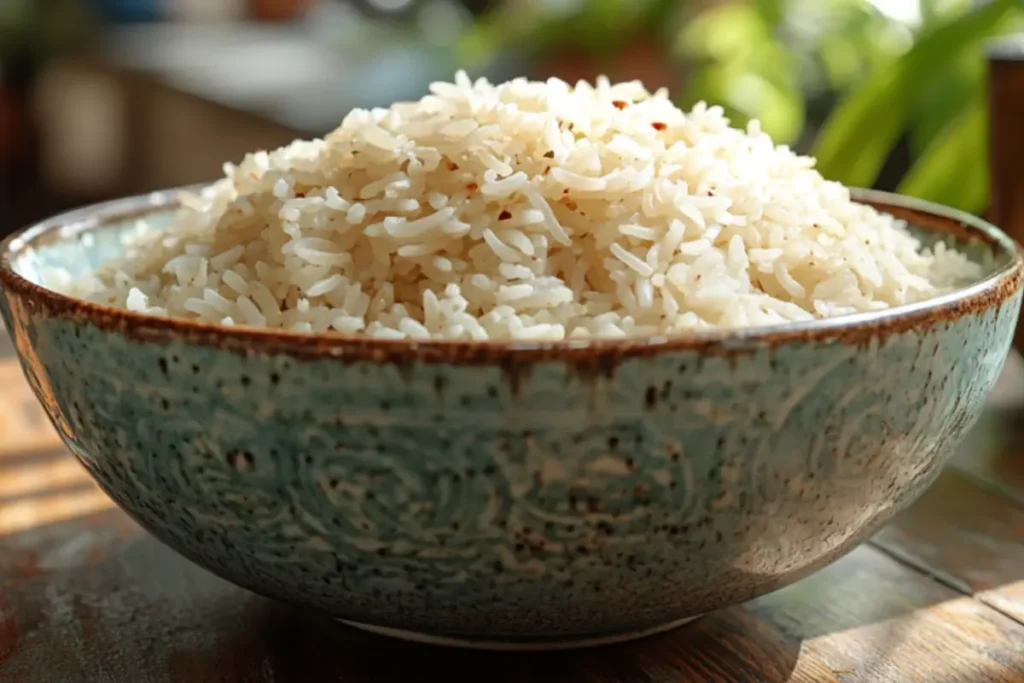
Ever wondered why restaurant fried rice never turns into a clumpy, soggy mess? The secret lies in using day-old rice.
Freshly cooked rice contains excess moisture, which makes it too soft for frying. When you toss fresh rice in a wok, it releases steam, turning everything into a sticky lump.
Day-old rice, however, has had time to dry out in the fridge, resulting in separate, firm grains that fry beautifully. If you don’t have day-old rice, spread fresh rice on a baking sheet and chill it for 1–2 hours before cooking—it works in a pinch!
Essential Ingredients for Authentic Egg Fried Rice
When it comes to making authentic egg fried rice, you don’t need a long, complicated list of ingredients—just a handful of key items. Each one plays a crucial role in creating flavorful, perfectly textured fried rice that rivals any takeout.
Choosing the Right Type of Rice
The foundation of great egg fried rice is, of course, the rice itself. Using the wrong type can lead to either a sticky mess or dry, tasteless grains. Here’s what you need to know:
- Best Choice: Jasmine Rice – This medium-to-long grain rice is ideal for fried rice because it stays fluffy, separate, and slightly chewy when fried.
- Avoid: Short-Grain or Sticky Rice – While delicious in sushi or risotto, short-grain rice is too starchy, making it clump together instead of frying properly.
- Day-Old Rice is Key – As mentioned earlier, freshly cooked rice is too moist. Always use day-old rice, which has had time to dry out, preventing it from becoming soggy.
💡 Quick Fix: If you don’t have leftover rice, spread fresh rice on a baking sheet and refrigerate it for 1-2 hours before cooking.
The Role of Soy Sauce, Oyster Sauce, and Other Seasonings
A big mistake people make when cooking egg fried rice is overloading it with sauces. Authentic fried rice is all about balance—you want to enhance the natural flavors, not drown them.
Key Seasonings:
- Light Soy Sauce – Adds a subtle umami depth without overpowering the dish.
- Oyster Sauce (Optional but Recommended) – Gives a slight sweetness and complexity.
- Sesame Oil – Used at the end for a nutty aroma (never fry with it, as it burns easily).
- White Pepper – A must for authentic Chinese flavor, providing a mild heat without being overpowering.
- Salt – Just a pinch, since soy sauce already adds saltiness.
🚫 What NOT to Use:
❌ Dark Soy Sauce – This is too strong and will darken the rice unnecessarily.
❌ Hoisin Sauce or Teriyaki Sauce – These are for stir-fries, not fried rice.
The Importance of Properly Beaten Eggs
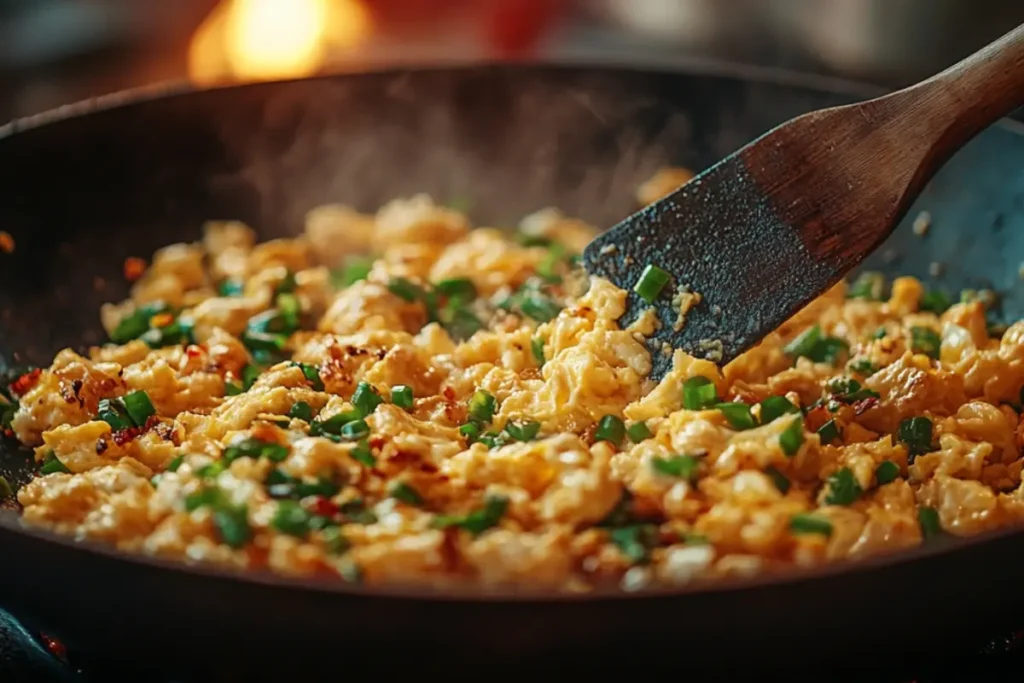
Egg fried rice isn’t just about tossing eggs into the wok. How you beat and cook your eggs matters!
- Beat the Eggs Thoroughly – Whisk them well to create a uniform texture. You don’t want streaky, uneven eggs.
- Season Lightly – A pinch of salt and white pepper enhances the flavor.
- Cook Separately First – Scramble the eggs before adding the rice. This prevents them from disappearing into the dish and gives you fluffy, distinct egg pieces.
Why High Heat and a Wok Are Crucial

If you want restaurant-quality fried rice, a wok and high heat are non-negotiable.
The secret to restaurant-quality fried rice lies in achieving wok hei, that smoky, charred aroma created by high-heat cooking. If you’re curious about the science behind wok hei, check out this deep dive into how it works.
🔥 Why High Heat?
- It sears the rice quickly, giving it a smoky depth without making it mushy.
- It helps develop wok hei, the signature smoky aroma of authentic stir-fried dishes.
- It prevents ingredients from steaming and getting soggy.
🍳 Why a Wok?
- Its curved shape allows for easy tossing without spilling rice everywhere.
- It distributes heat more evenly than a flat pan.
- The high sides prevent overcrowding, so everything fries instead of steaming.
🚀 No Wok? No Problem!
If you don’t have a wok, use a large, heavy-bottomed pan and cook in small batches to prevent overcrowding.
Common Mistakes to Avoid
❌ Using Fresh Rice – This leads to mushy fried rice. Always use day-old rice.
❌ Overloading with Sauce – Too much soy sauce will make the rice soggy.
❌ Cooking on Low Heat – The rice needs high heat to fry properly.
❌ Skipping the Prep – Have everything chopped and ready before you start cooking.
Step-by-Step Guide: How to Make Authentic Egg Fried Rice
Now that you know the essentials, let’s get to the fun part—cooking! Follow these steps for the perfect egg fried rice.
Step 1: Preparing the Ingredients the Right Way
Before you start, make sure everything is prepped:
✅ 2 cups of day-old jasmine rice – Break it apart with your hands so it’s loose.
✅ 2 large eggs – Beaten with a pinch of salt and white pepper.
✅ 2 tablespoons of light soy sauce – For flavor balance.
✅ 1 tablespoon of oyster sauce – Optional but adds depth.
✅ 1 teaspoon of sesame oil – For fragrance at the end.
✅ ½ cup of chopped green onions – Adds freshness.
✅ 2 cloves of garlic, minced – Boosts umami.
✅ 1 tablespoon of vegetable oil – For frying.
Step 2: Cooking Order—Timing is Everything
Cooking egg fried rice is all about the right sequence. Get this wrong, and you’ll end up with a mushy disaster.
Here’s the correct order:
1️⃣ Heat the wok until smoking hot – Add vegetable oil.
2️⃣ Scramble the eggs first – Pour in the beaten eggs and stir quickly. Remove and set aside.
3️⃣ Sauté the aromatics – Add garlic and green onions, stirring for 10-15 seconds.
4️⃣ Add the rice – Toss well, breaking up any clumps. Stir-fry for about 2 minutes.
5️⃣ Season with soy sauce & oyster sauce – Stir quickly to coat the rice evenly.
6️⃣ Return the eggs – Mix them back into the rice, breaking them into small pieces.
7️⃣ Finish with sesame oil – A quick toss at the end for that nutty aroma.
👨🍳 Pro Tip: Keep everything moving! Fried rice should be cooked quickly and constantly tossed to avoid burning.
Step 3: Mixing, Tossing, and Achieving the Perfect Wok Hei
To get that restaurant-style fried rice, follow these tips:
- Toss, Don’t Stir – Use a quick, flicking motion with your wrist instead of stirring like a soup.
- Don’t Overcrowd the Wok – Too much rice will steam instead of fry.
- Listen for the Sizzle – If it’s too quiet, your heat is too low.
🔥 Want That Smoky Wok Hei?
- Cook on the highest heat possible.
- Let the rice sit for a few seconds before tossing—it needs direct heat to char slightly.
- Use a carbon steel wok for best results.
Now that you know the essential techniques and step-by-step method, you’re ready to cook up a batch of authentic, delicious egg fried rice!
Customizing Your Fried Rice: Variations & Additions
If you love experimenting with different fried rice styles, try making Authentic Anjappar Egg Fried Rice, a South Indian-inspired variation that adds bold flavors to your meal.
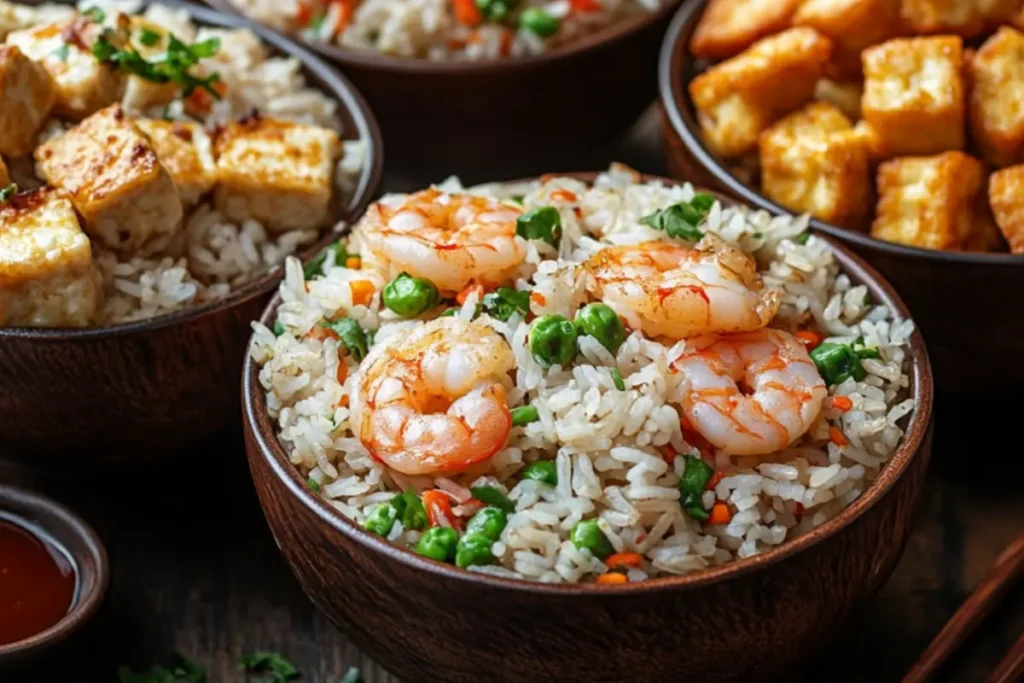
One of the best things about authentic egg fried rice is its versatility. While the classic version sticks to rice, eggs, and seasonings, you can easily customize it with proteins and vegetables to suit your taste.
Adding Proteins: Chicken, Shrimp, or Tofu?
Adding protein to your fried rice makes it a complete meal. Here’s how to incorporate chicken, shrimp, or tofu while keeping the dish balanced and flavorful.
Chicken Fried Rice 🐔
- Best Cut: Boneless, skinless chicken thighs (more tender than chicken breast).
- How to Prepare: Dice the chicken into small, bite-sized pieces.
- Marination: Toss with a little soy sauce, white pepper, and cornstarch for extra tenderness.
- Cooking Tip: Stir-fry the chicken before adding the rice, then set it aside to prevent overcooking.
Shrimp Fried Rice 🍤
- Best Type: Medium-sized shrimp, peeled and deveined.
- How to Prepare: Pat dry and season with a pinch of salt and white pepper.
- Cooking Tip: Cook shrimp separately for 1–2 minutes per side, then add it back in at the end. Overcooked shrimp = rubbery texture.
Tofu Fried Rice (Vegetarian Option) 🥢
- Best Type: Firm or extra-firm tofu (soft tofu will break apart).
- How to Prepare: Cut into small cubes and pan-fry until golden brown before adding to the rice.
- Flavor Tip: Marinate with soy sauce and a touch of sesame oil to absorb more flavor.
🔪 Pro Tip: Always cook proteins separately from the rice to avoid overcooking. Add them back in at the end for the best texture.
Vegetables That Enhance Flavor and Texture
Adding vegetables is a great way to boost flavor, texture, and nutrition. Here are some great choices for authentic egg fried rice:
Best Vegetables for Fried Rice
🥕 Carrots – Dice them finely for sweetness and color.
🫑 Bell Peppers – Add a slight crunch and natural sweetness.
🟢 Green Peas – A classic addition, but don’t overdo it (Western versions tend to use too much).
🌽 Corn Kernels – Sweet, juicy pops of flavor.
🥬 Bok Choy or Chinese Greens – Lightly sautéed for added freshness.
🌿 Bean Sprouts – Toss in at the last second for a crunchy bite.
How to Cook Vegetables Properly
- Stir-fry firm veggies (like carrots) before adding rice so they soften slightly.
- Add delicate greens (like bok choy) at the very end to retain freshness.
- Avoid overloading the wok with too many veggies—fried rice should be about the rice!
🥢 Pro Tip: Stick to 2–3 vegetables max to maintain balance. Overloading can make the rice too wet and heavy.
Storage and Reheating Tips for the Best Leftovers
For those who love convenience, you can even reheat your fried rice using an air fryer for a crispy finish. Learn how to cook and reheat frozen meat in an air fryer for perfect results.
Egg fried rice makes fantastic leftovers, but storing and reheating it the right way is key to keeping it delicious, not dry or mushy.
How Long Can You Store Fried Rice?
Properly stored, fried rice lasts:
✅ In the fridge: Up to 4 days in an airtight container.
✅ In the freezer: Up to 3 months (if stored properly).
🚫 What NOT to do:
❌ Don’t leave fried rice at room temperature for more than 2 hours—bacteria love warm, moist rice!
The Best Way to Reheat Without Losing Flavor
Reheating fried rice incorrectly can make it dry, rubbery, or too greasy. Follow these methods to bring it back to life.
Method 1: Reheat in a Wok (Best Method)
🔥 Heat a wok on high heat and add a small splash of oil.
🥢 Toss the rice for 2–3 minutes, adding a little water or chicken broth to rehydrate if needed.
🍳 Optional: Crack in an extra egg for added freshness.
Method 2: Microwave (For Convenience)
- Place rice in a microwave-safe bowl.
- Cover with a damp paper towel to trap moisture.
- Heat in 30-second intervals, stirring in between to distribute heat.
🚀 Pro Tip: Adding a teaspoon of water before microwaving helps keep the rice from drying out.
Can You Freeze Fried Rice?
Yes! Fried rice freezes well, but you need to store it properly to avoid freezer burn.
How to Freeze Fried Rice
✅ Cool the rice completely before freezing (hot rice = ice crystals = soggy rice).
✅ Store in airtight containers or zip-top bags, pressing out excess air.
✅ Freeze in individual portions for easy reheating.
How to Reheat Frozen Fried Rice
❄ From frozen: Toss directly into a hot wok or pan—no need to thaw!
💨 From thawed: Microwave or stir-fry on high heat.
FAQs About How to Make Authentic Egg Fried Rice
What is the secret to Chinese fried rice?
The secret lies in using day-old rice, high heat, and a hot wok. The dry rice grains fry better, while the high heat gives the dish that signature smoky “wok hei” flavor.
How to make authentic Chinese egg fried rice?
Start with cold, leftover jasmine rice, fry it in a hot wok, and use light soy sauce, eggs, and aromatics like garlic and green onions. Keep it simple—authentic fried rice isn’t overloaded with ingredients!
What makes fried rice taste authentic?
The right technique and ingredients! Use day-old jasmine rice, minimal soy sauce, white pepper, and sesame oil. Cooking over high heat in a wok also adds that authentic, restaurant-quality taste.
How do you make fried rice taste like a restaurant?
Use a carbon steel wok, cook on high heat, and toss the rice quickly. Add a little oyster sauce, white pepper, and sesame oil for depth, and don’t forget the wok hei effect—let the rice char slightly for smoky flavor.
What is the best oil to use for fried rice?
Use a neutral, high-smoke-point oil like vegetable oil, peanut oil, or canola oil. Avoid olive oil—it burns too easily and alters the flavor.
Can I make fried rice without soy sauce?
Yes! Use salt and white pepper for seasoning, and replace soy sauce with fish sauce or a little oyster sauce for umami depth. A splash of sesame oil at the end also adds great flavor.
What’s the best way to get wok hei at home?
Use a carbon steel wok, preheat it until smoking, and cook in small batches over high heat. Let the rice sit in the wok for a few seconds before tossing—this helps develop that smoky, restaurant-style char.

